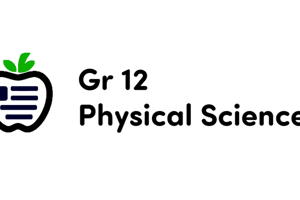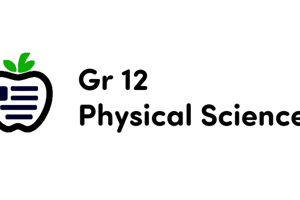Podcast
Questions and Answers
What is the main product formed when propene reacts with HCl in a hydrohalogenation reaction?
What is the main product formed when propene reacts with HCl in a hydrohalogenation reaction?
- Propanol
- Propane
- 1-Chloropropane (correct)
- 2-Chloropropane
Which of the following functional groups is NOT present in the compound CH3CH2CH2NH2?
Which of the following functional groups is NOT present in the compound CH3CH2CH2NH2?
- Alkyl halide (correct)
- Alkane
- Alcohol
- Amine
In a nucleophilic substitution reaction, what is the general role of the nucleophile?
In a nucleophilic substitution reaction, what is the general role of the nucleophile?
- To act as a catalyst for the reaction
- To break the bond between the leaving group and the substrate
- To accept a pair of electrons from the electrophile
- To donate a pair of electrons to the electrophile (correct)
Which of the following is NOT a characteristic of addition polymers?
Which of the following is NOT a characteristic of addition polymers?
What type of product is formed in a nucleophilic substitution reaction involving an alkyl halide?
What type of product is formed in a nucleophilic substitution reaction involving an alkyl halide?
Which of the following monomers would be used to make a polymer through addition polymerization?
Which of the following monomers would be used to make a polymer through addition polymerization?
Which functional group is commonly found in both esters and carboxylic acids?
Which functional group is commonly found in both esters and carboxylic acids?
Which of the following statements correctly describes the relationship between monomers and polymers?
Which of the following statements correctly describes the relationship between monomers and polymers?
What does the Quantum Mechanical Model of the atom primarily describe about electrons?
What does the Quantum Mechanical Model of the atom primarily describe about electrons?
Which principle states that the exact position and momentum of an electron cannot be known simultaneously?
Which principle states that the exact position and momentum of an electron cannot be known simultaneously?
Which molecular shape is associated with four electron pairs in VSEPR theory?
Which molecular shape is associated with four electron pairs in VSEPR theory?
How does raising the temperature affect the equilibrium constant (K) for an endothermic reaction?
How does raising the temperature affect the equilibrium constant (K) for an endothermic reaction?
Which of the following shapes corresponds to three bonding electron pairs and one lone pair?
Which of the following shapes corresponds to three bonding electron pairs and one lone pair?
In the context of VSEPR theory, what molecular shape results from five bonding pairs of electrons?
In the context of VSEPR theory, what molecular shape results from five bonding pairs of electrons?
What effect does a catalyst have on a chemical reaction?
What effect does a catalyst have on a chemical reaction?
What is the bond angle in a molecule with a Tetrahedral shape?
What is the bond angle in a molecule with a Tetrahedral shape?
What is the electron configuration of the Cu2+ cation?
What is the electron configuration of the Cu2+ cation?
Which type of intermolecular force is present in all molecules?
Which type of intermolecular force is present in all molecules?
Which condition indicates a molecule is polar based on its molecular structure?
Which condition indicates a molecule is polar based on its molecular structure?
What is the strongest type of intermolecular force listed?
What is the strongest type of intermolecular force listed?
Which of the following is a characteristic of nonpolar molecules?
Which of the following is a characteristic of nonpolar molecules?
What is true about the boiling points of molecules with stronger intermolecular forces?
What is true about the boiling points of molecules with stronger intermolecular forces?
For a molecule to be considered polar, what must the difference in electronegativity typically be?
For a molecule to be considered polar, what must the difference in electronegativity typically be?
Which type of molecule would typically show higher solubility in water?
Which type of molecule would typically show higher solubility in water?
What is the correct product when a primary alcohol undergoes oxidation?
What is the correct product when a primary alcohol undergoes oxidation?
Which functional group is present in Carboxylic Acids?
Which functional group is present in Carboxylic Acids?
Which reaction type results in the conversion of alkenes to alkanes?
Which reaction type results in the conversion of alkenes to alkanes?
What is produced when a secondary alcohol is oxidized?
What is produced when a secondary alcohol is oxidized?
Which of the following compounds contains a carbonyl group?
Which of the following compounds contains a carbonyl group?
Which functional group is represented by (-COO-)?
Which functional group is represented by (-COO-)?
What is the result of the halogenation reaction involving alkenes?
What is the result of the halogenation reaction involving alkenes?
Which of the following substances does not undergo oxidation when subjected to oxidizing conditions?
Which of the following substances does not undergo oxidation when subjected to oxidizing conditions?
What is the effect of a catalyst on the activation energy of a reaction?
What is the effect of a catalyst on the activation energy of a reaction?
How do catalysts affect the position of equilibrium in a chemical reaction?
How do catalysts affect the position of equilibrium in a chemical reaction?
Which of the following best describes collision theory?
Which of the following best describes collision theory?
Which action would shift the equilibrium of an endothermic reaction towards products?
Which action would shift the equilibrium of an endothermic reaction towards products?
What role does temperature play in reaction rates according to collision theory?
What role does temperature play in reaction rates according to collision theory?
In terms of Le Chatelier's Principle, what happens when the concentration of products is decreased in an exothermic reaction?
In terms of Le Chatelier's Principle, what happens when the concentration of products is decreased in an exothermic reaction?
What is ΔH, and how is it influenced by catalysts?
What is ΔH, and how is it influenced by catalysts?
Which statement correctly identifies the outcome of increased pressure in gaseous reactions?
Which statement correctly identifies the outcome of increased pressure in gaseous reactions?
Flashcards
Structural Isomers
Structural Isomers
Compounds with the same chemical formula but different arrangements of atoms.
Alcohols
Alcohols
Compounds with a hydroxyl (OH) group bonded to a carbon atom.
Aldehydes
Aldehydes
Compounds with a carbonyl group (C=O) connected to two other groups.
Ketones
Ketones
Signup and view all the flashcards
Oxidation of Alcohols
Oxidation of Alcohols
Signup and view all the flashcards
Hydrogenation
Hydrogenation
Signup and view all the flashcards
Hydration
Hydration
Signup and view all the flashcards
Halogenation
Halogenation
Signup and view all the flashcards
Hydrohalogenation
Hydrohalogenation
Signup and view all the flashcards
Nucleophilic Substitution
Nucleophilic Substitution
Signup and view all the flashcards
Electrophilic Substitution
Electrophilic Substitution
Signup and view all the flashcards
Polymer
Polymer
Signup and view all the flashcards
Monomer
Monomer
Signup and view all the flashcards
Polymerization
Polymerization
Signup and view all the flashcards
Addition Polymer
Addition Polymer
Signup and view all the flashcards
Condensation Polymer
Condensation Polymer
Signup and view all the flashcards
London Dispersion Forces
London Dispersion Forces
Signup and view all the flashcards
Dipole-Dipole Forces
Dipole-Dipole Forces
Signup and view all the flashcards
Hydrogen Bonding
Hydrogen Bonding
Signup and view all the flashcards
How to Determine Molecular Polarity
How to Determine Molecular Polarity
Signup and view all the flashcards
Electronegativity
Electronegativity
Signup and view all the flashcards
Nonpolar Molecules
Nonpolar Molecules
Signup and view all the flashcards
Polar Molecules
Polar Molecules
Signup and view all the flashcards
Boiling Point
Boiling Point
Signup and view all the flashcards
Catalysts and Reaction Rate
Catalysts and Reaction Rate
Signup and view all the flashcards
Catalysts and Equilibrium
Catalysts and Equilibrium
Signup and view all the flashcards
Catalysts and Enthalpy
Catalysts and Enthalpy
Signup and view all the flashcards
Activation Energy
Activation Energy
Signup and view all the flashcards
Collision Theory
Collision Theory
Signup and view all the flashcards
Reduction
Reduction
Signup and view all the flashcards
Oxidation
Oxidation
Signup and view all the flashcards
Redox Reaction
Redox Reaction
Signup and view all the flashcards
Quantum Mechanical Model
Quantum Mechanical Model
Signup and view all the flashcards
Heisenberg Uncertainty Principle
Heisenberg Uncertainty Principle
Signup and view all the flashcards
VSEPR Theory
VSEPR Theory
Signup and view all the flashcards
Exothermic Reaction
Exothermic Reaction
Signup and view all the flashcards
Endothermic Reaction
Endothermic Reaction
Signup and view all the flashcards
Stress (in Equilibrium)
Stress (in Equilibrium)
Signup and view all the flashcards
Catalyst
Catalyst
Signup and view all the flashcards
Equilibrium Constant (K)
Equilibrium Constant (K)
Signup and view all the flashcards
Study Notes
Organic Chemistry - Unit 1
- Structural Isomers: Compounds with the same chemical formula but different structures. Example: Hexane and 2-Methylpentane.
Functional Groups
- Alcohols: Contain a hydroxyl (-OH) group bonded to a carbon atom. Example: Ethanol (CH3CH2OH).
- Aldehydes: Contain a carbonyl group (carbon double bonded to an oxygen) attached to a hydrogen and a carbon group.
- Ketones: Contain a carbonyl group (carbon double bonded to an oxygen) attached to two carbon groups.
- Carboxylic Acids: Contain a carboxyl (-COOH) group. Example: Acetic Acid (CH3COOH).
- Esters: Contain a (-COO-) group between two carbon chains. Example: Ethyl Acetate (CH3COOCH2CH3).
- Amines: Contain an amino (-NH2) group. Example: Methyl Amine (CH3NH2).
- Amides: Contain a (-CONH2) group. Example: Acetamide (CH3CONH2).
Other Functional Groups
- Alkenes: Two carbons with a double bond.
- Alkynes: Two carbons with a triple bond.
- Ethers: Contain an oxygen atom bonded to two carbon atoms.
- Halides: Contain a halogen (F, Cl, Br, or I) bonded to a carbon.
- Thiols: Contain a sulfur atom bonded to a hydrogen and a carbon.
- Phenol: A hydroxyl group attached to an aromatic/benzene ring
Reactions in Organic Chemistry
- Oxidation Reactions:
- Primary alcohols become aldehydes during oxidation.
- Secondary alcohols become ketones during oxidation.
- Tertiary alcohols do not undergo oxidation.
- Aldehydes become carboxylic acids during oxidation.
- Addition Reactions: Alkenes and alkynes can react with other molecules under specific conditions like heat or light to add atoms or groups to them.
- Hydrogenation: Adding hydrogen (H2).
- Hydration: Adding water (H2O).
- Halogenation: Adding halogens (Cl2 or Br2).
- Substitution Reactions: Nucleophilic Substitution: A nucleophile (strong electron donor) attacks an alkyl halide replacing the halide. Electrophilic Substitution - The replacement of a hydrogen in the ring by an electrophile.
Summary Table of Functional Groups
| Compound Type | Functional Group | Example | Structure |
|---|---|---|---|
| Amines | -NH2 | Methylamine (CH3NH2) | CH3-NH2 |
| Amides | -CONH2 | Acetamide (CH3CONH2) | CH3-C-NH2 |
| Ketones | C=O | Acetone (CH3COCH3) | CH3-C-CH3 |
| Aromatics | Benzene ring | Benzene (C6H6) | C6H6 |
| Esters | -COO- | Ethyl Acetate (CH3COOCH2CH3) | CH3-C-O-CH2CH3 |
Unit 2: Atomic Structure & Chemical Bonding
- Electron Configurations (Neutral + Cation) for Copper and Chromium: Copper (Cu) [Ar] 4s1 3d10, Copper 2+ [Ar] 3d9, Chromium (Cr) [Ar] 4s1 3d5, Chromium 3+ [Ar] 3d3
- Intermolecular Forces: London Dispersion, Dipole-Dipole, and Hydrogen bonds.
- How to Identify Intermolecular Bonds:
- Nonpolar molecules: Dispersion forces.
- Polar molecules: Dispersion and dipole-dipole forces.
- Molecules with O-H, N-H, or F-H bonds: Dispersion, dipole-dipole, and hydrogen bonding
Unit 3: Kinetics
- Temperature effects on equilibrium: For exothermic reactions, raising temperature decreases the equilibrium constant (K). For endothermic reactions, raising temperature increases K.
- Catalysts: Catalysts do not change the position of equilibrium or the equilibrium constant (K), they do not alter ΔH, they only speed up the reaction
- Le Chatelier's principle: The system will shift equilibrium to minimize the stress or change exerted upon it. A change in concentration, temperature, or pressure of reactants or products will result in the movement of the equilibrium.
Unit 4: Acids and Bases
- Redox reactions: Changes in oxidation numbers of elements, involving loss and gain of electrons.
- No redox reaction: Oxidation numbers of all elements remain unchanged
Studying That Suits You
Use AI to generate personalized quizzes and flashcards to suit your learning preferences.




